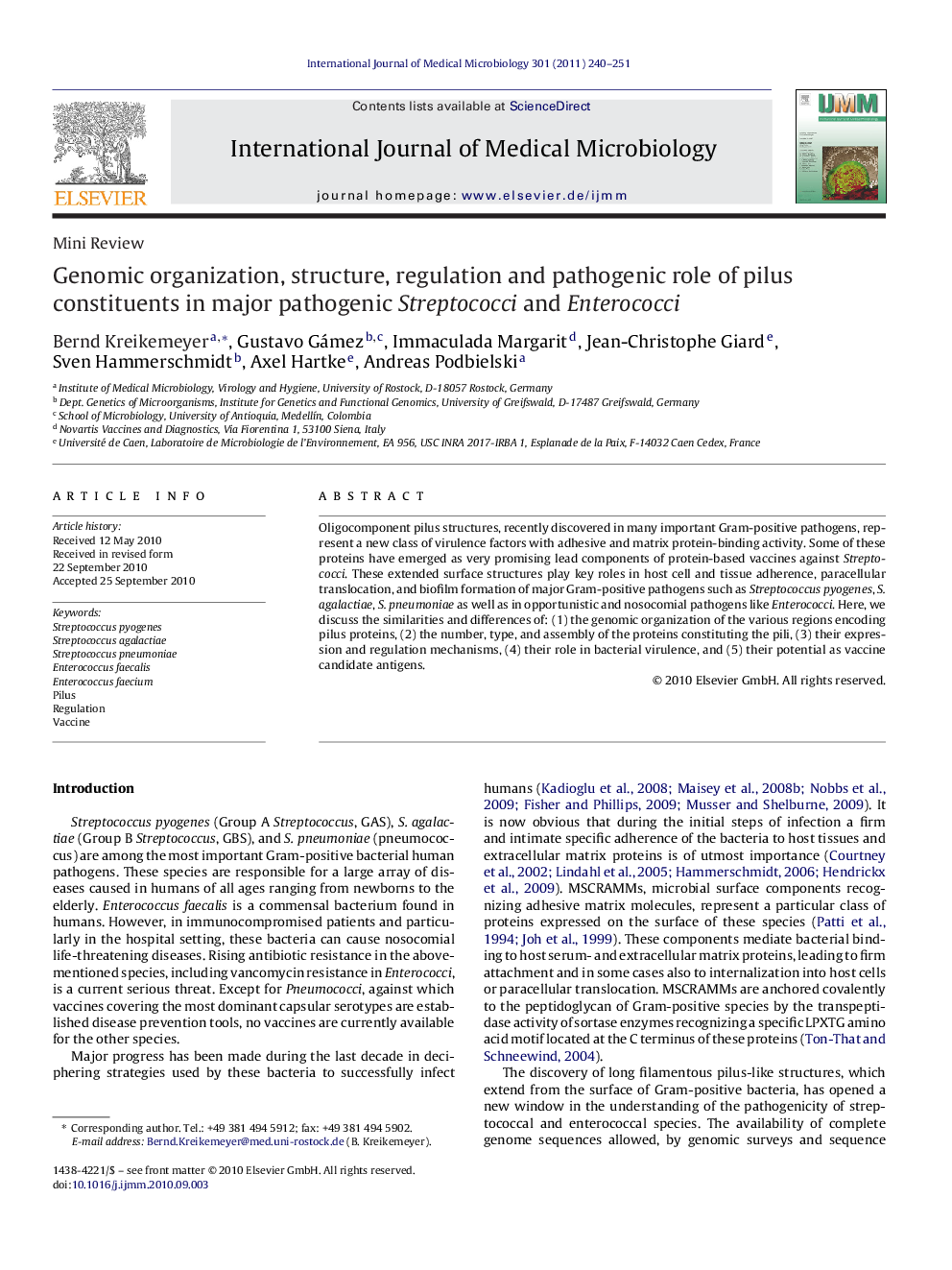| Article ID | Journal | Published Year | Pages | File Type |
|---|---|---|---|---|
| 2054484 | International Journal of Medical Microbiology | 2011 | 12 Pages |
Oligocomponent pilus structures, recently discovered in many important Gram-positive pathogens, represent a new class of virulence factors with adhesive and matrix protein-binding activity. Some of these proteins have emerged as very promising lead components of protein-based vaccines against Streptococci. These extended surface structures play key roles in host cell and tissue adherence, paracellular translocation, and biofilm formation of major Gram-positive pathogens such as Streptococcus pyogenes, S. agalactiae, S. pneumoniae as well as in opportunistic and nosocomial pathogens like Enterococci. Here, we discuss the similarities and differences of: (1) the genomic organization of the various regions encoding pilus proteins, (2) the number, type, and assembly of the proteins constituting the pili, (3) their expression and regulation mechanisms, (4) their role in bacterial virulence, and (5) their potential as vaccine candidate antigens.
